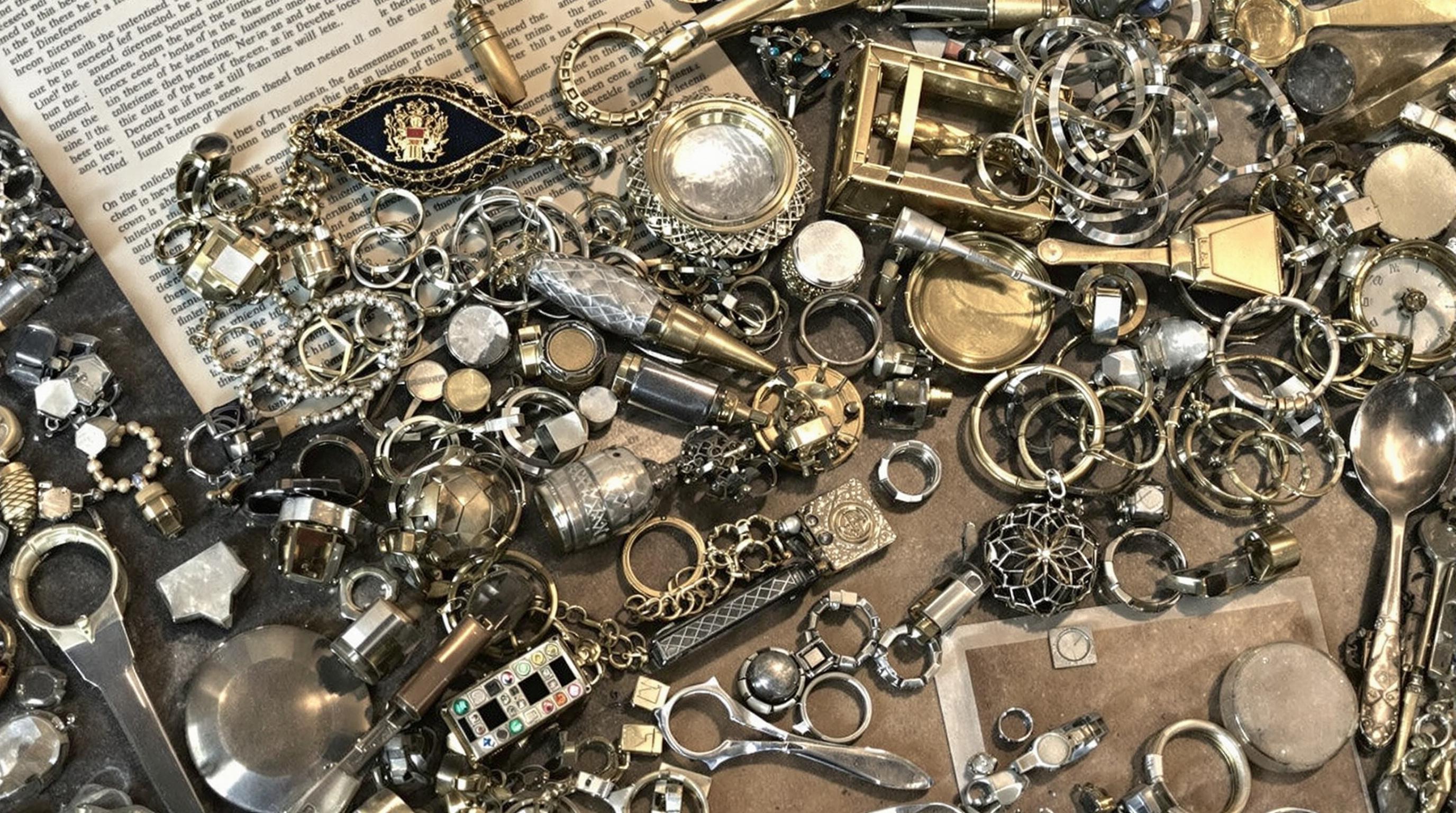Related Articles
- 5 Game-Changing Thematic ETFs Introduced Since 2019 That Are Redefining Global Market Strategies
- Unveiling Forgotten Revenue Streams: How Niche Collectibles Can Silently Boost Your Wealth Over Time
- Unlocking the Secrets: How Forgotten Heirlooms Can Reshape Your Legacy Beyond Traditional Wills
- 7 Emerging Global Investment Platforms Revolutionizing Portfolio Diversity Since 2019
- Unlocking the Role of Urban Gardens in Shaping Future Wellness Strategies Beyond Traditional Medicine
- 7 Emerging Digital Tools for Passive Income Planning Compared and Ranked for 2024 Success
Unlocking the Secrets: How Forgotten Heirlooms Can Reshape Your Legacy Beyond Traditional Wills
Unlocking the Secrets: How Forgotten Heirlooms Can Reshape Your Legacy Beyond Traditional Wills
Unlocking the hidden value of forgotten heirlooms can transform your legacy in ways that a traditional will simply cannot. This article explores how sentimental artifacts breathe life into heritage, connecting generations beyond legal documents.
From Dust to Destiny: The Story Behind the Forgotten Heirloom
Imagine a dusty attic filled with boxes, each packed with relics of a bygone era. Within these forgotten treasures lie stories and memories that, once unlocked, can redefine family history.
Take the case of Margaret Lewis, a 68-year-old grandmother from Ohio, who discovered a century-old diary belonging to her great-grandmother. This diary, filled with personal accounts of immigration and resilience, became the cornerstone for an oral history project that connected her descendants with their roots in a profound and emotional way.
Unlike traditional wills, which typically list assets with dates and beneficiaries, heirlooms embody more than material value—they embody identity and emotional continuity.
The Emotional Weight of Tangible Memories
Why do heirlooms hold more sway than financial bequests, sometimes? Because they carry stories. Studies show that 72% of families cherish stories connected to objects more than monetary inheritances (Journal of Family Psychology, 2022).
This underscores an important truth: heirlooms encourage storytelling, enabling younger generations to understand the struggles and triumphs of their ancestors. By passing on these objects, you are affording them a window into their familial psyche, often not captured in legal papers.
How Forgotten Heirlooms Fill the Gaps Left by Wills
Legal documents are cold and functional; they don’t capture your values, mistakes, or dreams. Forgotten heirlooms, on the other hand, can tell these stories without a single written clause.
For example, a grandfather’s hand-carved chess set might remind a family not just of leisure time but of the strategy and patience he imparted. These objects become catalysts for dialogue, keeping lessons alive that a will could never communicate.
Practical Ways to Preserve and Pass Down Heirlooms
Firstly, catalog your heirlooms with detailed notes on their significance. Digital archives can be invaluable for this, especially when paired with photos and anecdotes. Consider creating video recordings explaining the history behind each piece—an approach that marries tradition with technology.
Secondly, involve younger family members early. Doing so creates an emotional investment—which often solves the problem of heirlooms lost or discarded after an estate is settled.
A New Wave of Legacy Planning: Integrating Heirlooms Into Your Estate Strategy
According to a 2023 survey by Legacy Planning Institute, 64% of adults aged 45-65 want to incorporate family artifacts into their legacy plans more explicitly but don’t know how. This gap presents an opportunity for advisors and families alike to rethink estate planning beyond just financial terms.
Some innovative families are turning heirloom stories into interactive family trees or bespoke photo books. These formats ensure that the legacy is not static but evolves with new narratives added by each generation.
Humor Break: When Heirlooms Accidentally Challenge the Will
There’s always the classic tale of Aunt Edna’s “priceless” porcelain cat, which turns out to be a knock-off, but sparks a family feud that’s more lively than any courtroom drama. This illustrates an often-overlooked truth: heirlooms’ value can be emotional, cultural, or symbolic rather than strictly monetary.
Sometimes, it’s the memories they evoke—the family dinners, inside jokes, or unspoken bonds—that truly enrich a legacy.
Storytelling: Lessons From the Past
When I was 25, my great-uncle handed me a rusty, old pocket watch during a family reunion. At the time, I thought little of it, but years later, after he passed, it became a treasured reminder of his perseverance during hard times.
Objects like that watch become touchstones, representing resilience, hope, and connection—the building blocks of a meaningful legacy beyond paper.
The Limitations of Traditional Wills in Preserving Personal Legacy
Wills excel at transferring assets but fall short on capturing personal values and histories. The average will in the US covers assets worth around $250,000, but what about the intangible assets—memories, ethics, traditions? These often get lost in the translation.
Moreover, wills can be contested, delayed, or ignored, while heirlooms, particularly when integrated thoughtfully into family life, can serve as enduring legacies that withstand legal disputes.
Case Study: A Legacy Rediscovered
Consider the Julien family, where an old quilt handed down through generations became a symbol of family unity. When the family patriarch passed away, the will detailed financial inheritances, yet the physical passing of the quilt at the memorial drew more emotional response than all documents combined.
This example vividly illustrates how heirlooms can carry legacy in ways the law cannot quantify.
Incorporating Heirlooms into Modern Legal Frameworks
Increasingly, lawyers suggest including a "personal property memorandum" alongside wills. This document can specify sentimental heirlooms and their intended recipients without legal complications, allowing families to preserve emotional legacies efficiently.
Such integration balances the cold certainty of legal frameworks with the warmth of personal history, allowing heirs to appreciate not just what is bequeathed, but why.
Closing Thoughts: Beyond Paper and Ink
Legacy is ultimately about connection—between past, present, and future. Unlocking the stories held by forgotten heirlooms bridges time and emotion in ways no formal document can replicate.
Start exploring your family's treasures today. You may find that the key to reshaping your legacy lies not just in wills, but in the memories whispered through old photos, letters, and cherished objects.
After all, true legacy is lived and remembered, not just written down.



